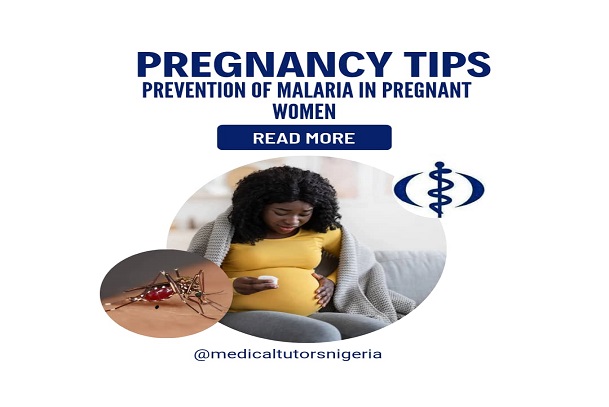 Wash your hands regularly and wear a face mask.
Learn more
Wash your hands regularly and wear a face mask.
Learn more

Introduction
Malaria is passed into the bloodstream through mosquito bites, and the effect of infection on pregnant women may range from negligible to severe, depending on the immunity an expectant mother has gotten before her pregnancy and during her pregnancy. Malaria infection during pregnancy is associated with maternal and foetal morbidity and mortality.
Malaria immunity is reduced by pregnancy but this can depend on the intensity of transmission; previous pregnancy numbers; and also, the presence of other medical conditions such as HIV infection that can cause further damage to the immune system during pregnancy.
The severity of malaria in endemic areas is higher in primigravida i.e., women who are getting pregnant for the first time.
Preventing Malaria in Pregnancy
In the quest to prevent maternal and foetal morbidity and mortality among pregnant women, the World Health Organization (WHO) recommends guidelines on how to control the severity of malaria among pregnant women.
These guidelines include:
Vector Control
This is the prevention of the transmission of malaria by reducing or stopping physical contact with mosquitoes or their bites. Vector control includes:
These bed nets form a protective barrier around pregnant women who sleeps under them, yet treated bed nets with an insecticide are much more protective than untreated nets.
These treated bed nets should be provided to pregnant women as early in pregnancy as possible. Their use should be encouraged for women throughout pregnancy and after giving birth.
NOTE: The usage of insecticide-treated nets or long-lasting insecticidal nets and indoor residual spraying are the two most used malaria vector control measures. It has proved to be protective and cost-effective.
Intermittent Preventive Treatment
Intermittent preventive treatment (IPTp) is the most recommended way to prevent malaria in pregnant women, especially in endemic areas such as African countries.
IPTp is based on the assumption that all pregnant women living in the malaria-endemic areas have malaria parasites in their bloodstream whether there are symptoms are not, and that malaria can still affect a pregnant woman and her unborn child even without symptoms. It entails the administration of a curative dose of an effective antimalarial drug to all pregnant women whether or not they are infected with the malaria parasite.
The World Health Organization (WHO) recommends that in endemic areas, IPTp with an effective antimalarial drug be provided as part of antenatal care, starting after the quickening (when a pregnant person starts to feel their baby's movement in their uterus (womb).
A schedule of four antenatal clinic visits, with three visits after quickening. The delivery of IPT with each scheduled visit after quickening will assure that a high proportion of women receive at least two doses.
Currently, the most effective drug for IPT is Sulphadoxine-Pyrimethamine (SP) because of its safety for use during pregnancy, efficacy in reproductive-age women, and feasibility for use. IPT-SP doses should not be given more frequently than monthly.
Sulphadoxine–Pyrimethamine (SP): Sulphadoxine-pyrimethamine (SP) is currently the most effective single-dose antimalarial drug for the prevention of malaria during pregnancy in endemic areas and low resistance to the SP.
Dosing: A single dose is three tablets of SP taken orally. Directly observed therapy. The WHO recommends at least two doses from the second trimester at least 1 month apart.
NOTE: In Nigeria, pregnant women are given IPTp and ITNs/LLINs free of charge in most public health facilities (state and federal government hospitals).
Diagnosis and Treatment of Malaria
It is recommended that once malaria symptoms are noticed, prompt and effective management of malaria should be done immediately. This is running malaria diagnosis using a rapid diagnostic test (RDT); blood smears; and malaria urine test. Treatment of malaria can be done while awaiting test results, especially in malaria-endemic areas. During the first trimester, malaria is treated with a combination of quinine 600mg and clindamycin 300mg b.d. for 1 week. During the second to last trimester, Artemisinin combination therapy can be given.
Conclusion
There is a complex interaction between malaria and pregnancy. It remains a major public health problem in endemic countries and one of the leading causes of maternal morbidity and perinatal mortality. Malaria in pregnancy is a considerable threat both to the mother and to the pregnancy. The management of pregnant women with malaria can be challenging. Malaria in pregnancy can be prevented!